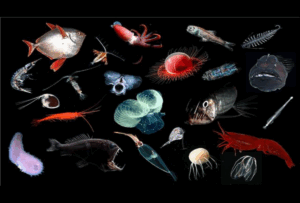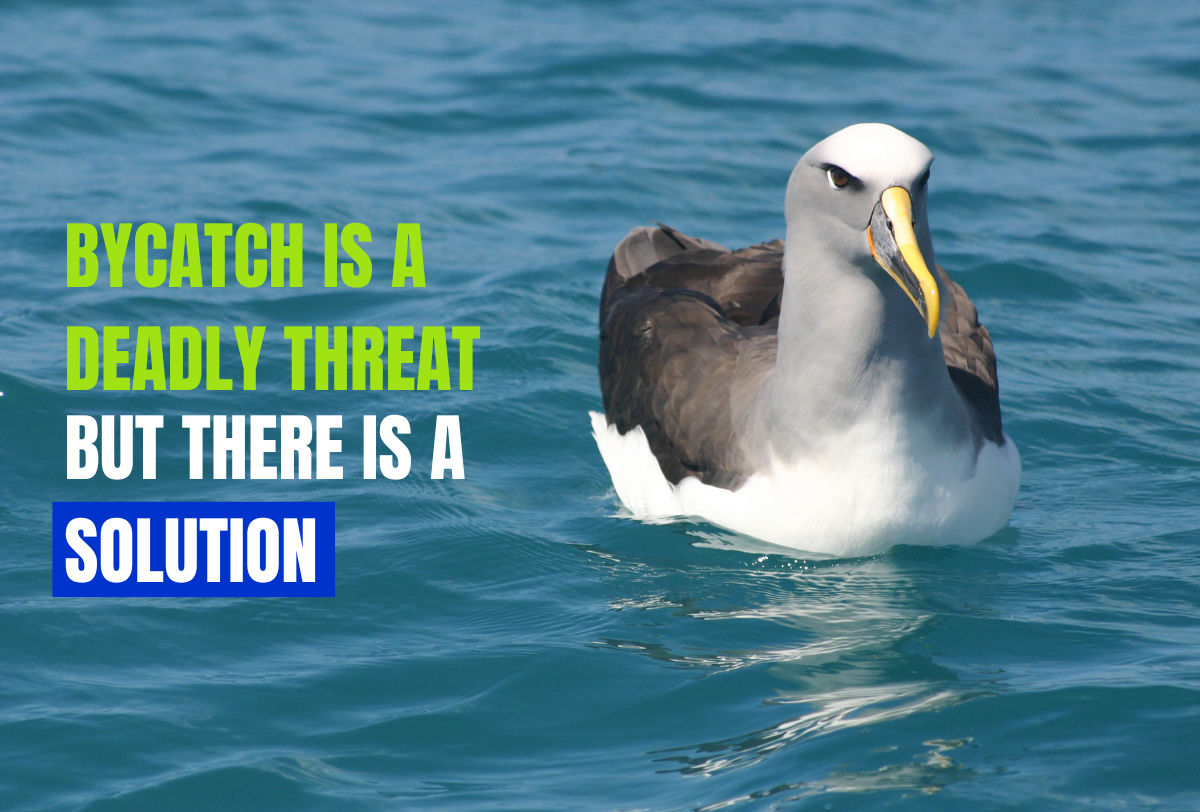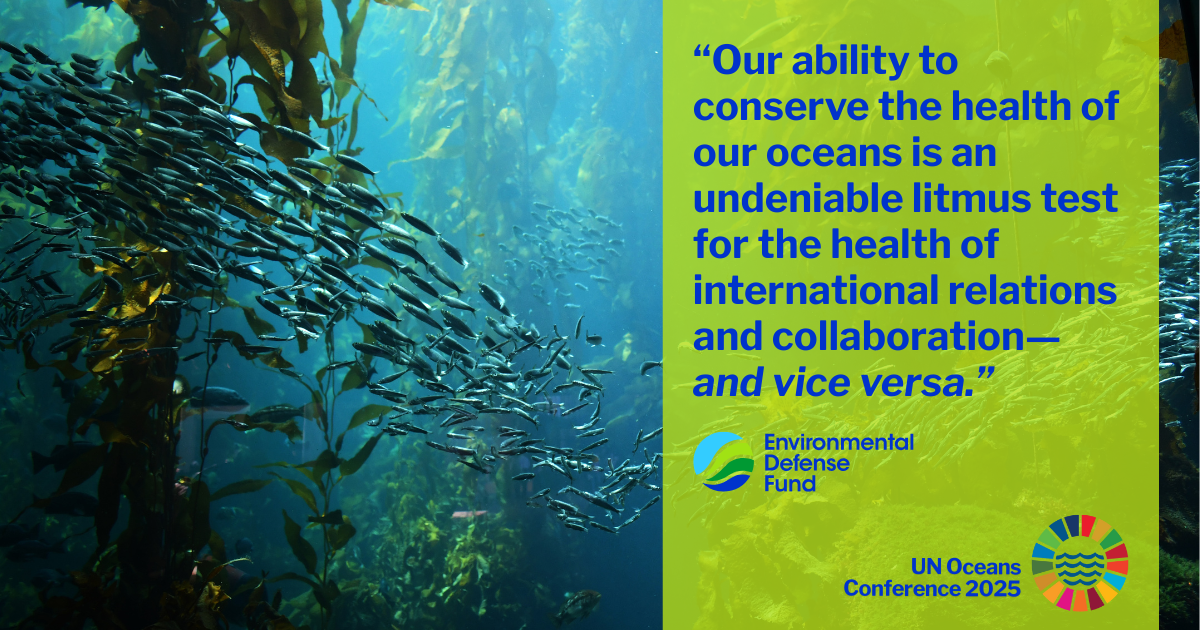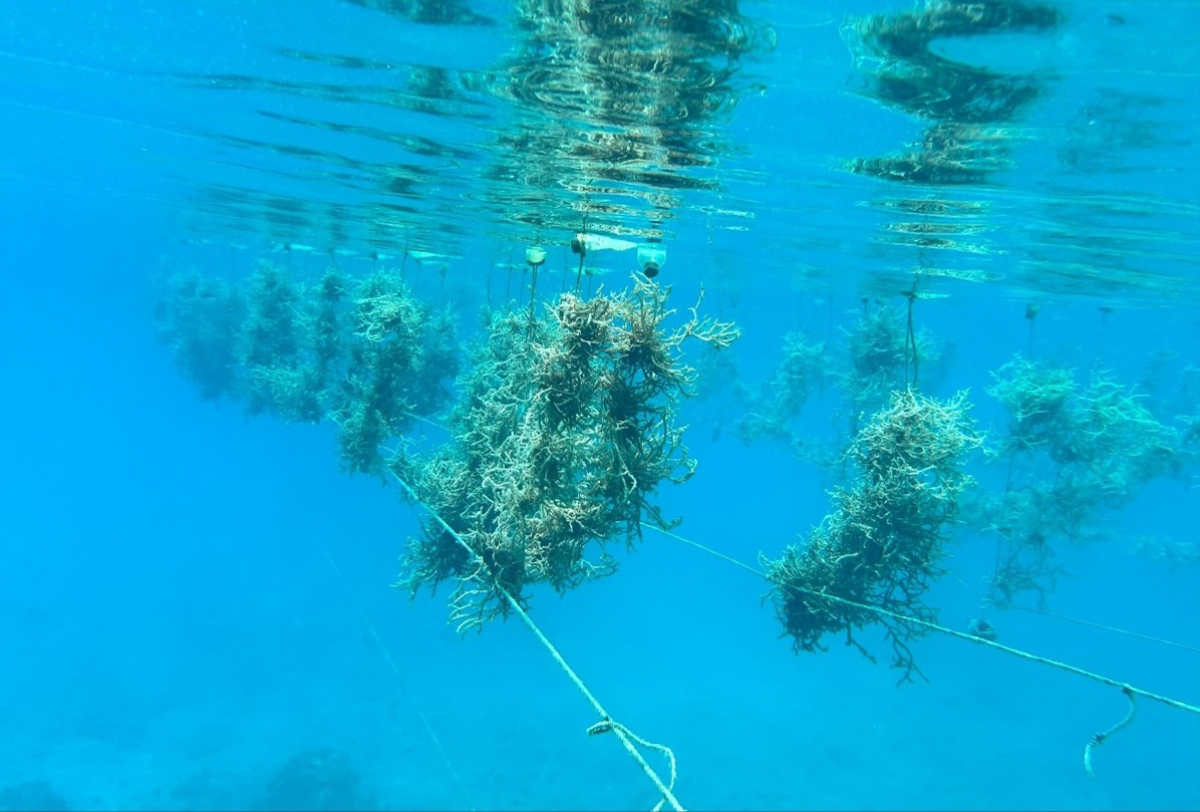
Motion 035: Protecting the Ocean’s Mesopelagic Zone at a Critical Moment
By: Kristin Kleisner and Sarah Swain
The mesopelagic zone, one of the most important parts of the ocean’s most important climate-regulating system, is under threat just as we’re beginning to understand its true value. With IUCN members preparing to vote on Motion 035 this October, we have a narrow window to protect this climate-critical ecosystem before industrial exploitation of the mesopelagic zone begins.
What is the mesopelagic zone and why does it matter?
The mesopelagic zone, also referred to as the ocean’s “twilight zone,” represents one of our planet’s most remarkable yet least understood ecosystems. This dimly-lit realm spans the water column from 200 to 1,000 meters deep, existing between the sunlit surface and the deep dark depths of the ocean, and containing 90% of the ocean’s total fish biomass, making it home to more marine life than all the other ocean layers combined.
Image: Woods Hole Oceanographic Institution
This ecosystem supports an incredible diversity of fish and invertebrates that have unique adaptations allowing them to thrive in twilight conditions. Species like lanternfish, along with countless squid and crustaceans, form complex food webs that sustain both deep-sea ecosystems and commercially important surface-dwelling species like tuna. The biodiversity concentrated in this zone has remained largely undisturbed by human activity, representing one of the planet’s last great wild frontiers.
Image: Woods Hole Oceanographic Institution
The twilight zone’s importance extends far beyond biodiversity. These tiny organisms perform the planet’s largest daily migration, providing a crucial climate service: transporting carbon dioxide (CO2) from the atmosphere to the ocean’s depths. Each night, these organisms feed near the surface, then descend back to the twilight zone, effectively drawing down between 2-6 gigatons (GT) of CO2 annually from the atmosphere and locking it away in deep sediments. This biological carbon pump is responsible for most carbon sequestration in the ocean, making the mesopelagic zone comparable to that of the Amazon rainforest. The economic value of this carbon storage alone ranges from $300-900 billion USD.
For global food systems, the mesopelagic zone represents both enormous potential and significant risk. The substantial biomass and high concentration of omega-3 fatty acids in mesopelagic species make them attractive for fishmeal, fish oil, pet foods, and health supplements.
Emerging threats to the twilight zone
The mesopelagic zone is vulnerable to mounting pressures from multiple sources, including mesopelagic fisheries, deep sea mining, and marine carbon dioxide removal (mCDR) technologies, that could undermine its vital climate and ecosystem functions.
Countries have expressed interest in developing mesopelagic fisheries to increase aquaculture production, as the zone possesses significant biomass that is virtually untapped and could be a source of fishmeal – but these creatures are extremely difficult to catch. However, technological advances continue to overcome these challenges. Scientists’ major concern is that the fishing industry will begin to proactively fish these species to secure quotas before regulations are established.
Deep-sea mining poses another threat, producing sediment plumes that could severely impact marine ecosystems, food chains, and the critical carbon sequestration performed by mesopelagic species.
The IUCN Congress and the critical vote on Motion 035
There’s a major moment coming up for the world’s conservation leaders to take action that proactively protects the mesopelagic zone: This October 9-15 in Abu Dhabi, UAE, the International Union for Conservation of Nature (IUCN) World Conservation Congress will represent the world’s largest and most inclusive environmental decision-making forum. Held every four years, it convenes a variety of stakeholders, including government agencies, civil society organizations, and Indigenous communities from around the globe to establish conservation priorities and drive action on the world’s most urgent environmental challenges.
Attendees at the upcoming Congress have the opportunity to vote yes on Motion 035, protection of mesopelagic ecosystem integrity, to pause the expansion of fishing and other exploitive activities that may impact mesopelagic species that are not currently fished, at least until we better understand these ecosystems and the activities that affect them. The motion, submitted by the Marine Conservation Institute, Ocean Conservancy, is an important first step toward protecting this mysterious but vital ocean zone.
The mesopelagic zone potentially stores up to 25% of the ocean’s annual carbon capture, playing a crucial role in the Earth’s climate stabilization. Given the irreversible nature of potential ecosystem damage and the significant gaps in our current scientific knowledge, Motion 035 serves as a critical opportunity for precautionary action. By supporting this motion at the Congress in October, IUCN members can champion sustainable stewardship that ensures future activities in the mesopelagic zone are based on sound science and robust international governance.
This motion provides the time needed to develop the knowledge and regulatory frameworks necessary to balance human needs with ecosystem integrity. IUCN members hold the power to ensure that the planet’s most important carbon storage system remains intact while we develop the understanding needed to use these resources sustainably – if at all.
EDF’s Call to Action
Recognizing the urgency of this issue, EDF recently hosted a webinar, Protecting the Ocean Twilight Zone: Driving Global Action for Biodiversity, Climate Stability, & a Sustainable Healthy Ocean, as part of our Solutions Series. The panel featured Ilysa Iglesias (Scripps Institution of Oceanography), Kristina Gjerde (Senior High Seas Advisor, IUCN Global Ocean Team, WCEL/WCPA), and Lance Morgan (President, Marine Conservation Institute), with a video from Ambassador Peter Thomson (UN Secretary-General’s Special Envoy for the Ocean), moderated by Kristin Kleisner. The webinar highlighted the critical importance of protecting the mesopelagic zone and supporting Motion 035, emphasizing how quickly the current protection from human exploitation could change without immediate conservation action. Watch the recording of the webinar here!
The scientific evidence is clear: the mesopelagic zone performs an irreplaceable function in climate stability, potentially worth hundreds of billions of dollars annually in climate services. The twilight zone’s protection is not just about preserving marine biodiversity; it’s about safeguarding a critical climate component of the Earth for future generations.















